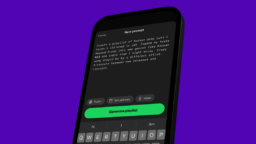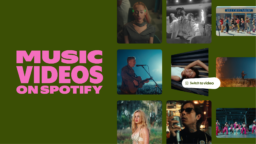Out of all the buzz that Spotify continues to amass as a leading music-streaming service, one problem that virtually no one in the music business has discussed yet is the gaping hole between Spotify’s oft-trumpeted mission statement and its actual business model.
Over the past year and a half, Spotify has made its two-pronged mission loud and clear in investor presentations and on its website: “[To] unlock the potential of human creativity — by giving a million creative artists the opportunity to live off their art and billions of fans the opportunity to enjoy and be inspired by it.”
The streaming company has attempted to “[give] a million creative artists the opportunity to live off their art” — or at least jumpstart that part of their objective — by acquiring startups that offer creative tools for musicians and podcasters.
There was Soundtrap, a cloud-based collaborative audio workstation, in November 2017; then Anchor, the podcast creation, hosting, distribution and monetization platform, in February 2019; and recently SoundBetter, the online work-for-hire marketplace connecting producers, vocalists, songwriters, engineers and other creative music professionals, in September 2019.
In an investor release, Spotify claimed that the SoundBetter acquisition in particular would help strengthen the company’s “two-sided marketplace” strategy — not only by “meeting the needs of creator teams to create art, engage with, grow, and better monetize their fanbase,” but also by “going from a one-size fits all model to a model that better fits the various types of content and creators on our platform.”
SoundBetter also adds an important B2B (or, in this case, “artist-to-artist”) aspect to the vertical integration of the music business that Spotify has been working towards for the past several years, across creation, distribution, live events, artist marketing and fan segmentation.
Notably, the online marketplace has been rebranded as “SoundBetter by Spotify for Artists.”
But I would argue that acquiring SoundBetter — alongside all other creator tools under the Spotify umbrella — is more of a move on Spotify’s part to make itself look “friendlier” to artists than a meaningful decision for the streaming company’s bottom line.
To its credit, Spotify has invested more in educational tools and experiences for artists than any of its mainstream rivals. Aside from outside acquisitions, the company’s current initiatives under the Spotify for Artists umbrella span a regularly-updated blog, a multi-city, in-person workshop series (Co.Lab), a self-serve digital-ad tool and a network of recording studios.
But if Spotify’s financial statements are any indication, all of these artist-facing elements are merely marketing and PR exercises to help drive the revenue stream that really matters for the company: consumer-facing subscriptions.
“Subscriptions are now taking up even larger pieces of Spotify’s revenue and gross-profit pies compared to the same quarter last year, suggesting that the company’s income sources are even less diversified than before.”
According to its latest earnings report, Spotify made 90% of its revenue and 94% of its gross profit in Q3 2019 from paid subscriptions, with the minority remainder going to advertising. In fact, subscriptions are now taking up even larger pieces of Spotify’s revenue and gross-profit pies compared to the same quarter last year, suggesting that the company’s income sources are even less diversified than before.
Spotify declined to comment for this piece regarding whether Spotify for Artists and its adjacent services would eventually turn into a serious revenue stream for the company (even at the ~10% level of advertising), as opposed to remaining just a brand-building tool.
In any case, it’s telling that Spotify for Artists tends not to get mentioned in the company’s earnings reports beyond a few sentences — implying that, at least for Wall Street, it’s not the star of the show.
If we follow the money, Spotify is first and foremost a consumer-facing subscription service, not a platform for artist marketing or development. But the streaming company’s acquisition history over the past six years seems to insinuate a self-imposed attempt to change that narrative.
To date, Spotify has publicly announced the acquisition of 17 companies, which can be broken down into the following seven categories:
- Creator tools (Soundtrap in November 2017, Anchor in February 2019, SoundBetter in September 2019)
- Podcast content and production (Gimlet Media in February 2019, Parcast in March 2019)
- Music and media rights management (Mediachain in April 2017, Loudr in April 2018)
- Social music experiences (Soundwave and Cord Project in January 2016, CrowdAlbum in April 2016)
- Machine-learning for audio analysis and recommendation (Tunigo in May 2013, The Echo Nest in March 2014, Seed Scientific in June 2015, Sonalytic and MightyTV in March 2017, Niland in May 2017)
- Other (Preact in November 2016)
This list demonstrates how Spotify’s competitive advantages have evolved over time along with the wider streaming landscape, leading to continually-shifting acquisition targets.
For instance, Spotify’s earliest acquisitions were focused mostly on acquiring machine-learning prowess, specifically around music analysis, curation and recommendation — which, with the exception of Pandora’s Music Genome Project, were largely missing in a user-friendly, consumer-facing form in the early 2010s. But as multiple competitors subsequently bought out their own data-analysis and machine-learning talent (e.g. Apple Music and Asaii, Pandora and Next Big Sound), Spotify could no longer rely on that realm alone as its sole competitive advantage.
There was also a brief stint in 2016 when Spotify bought several startups focused on social music experiences, only to shut all of them down immediately upon acquisition. In fact, no social music experience has made it into Spotify’s M&A portfolio since 2016, perhaps reflecting the wider challenges of monetizing a social music strategy (at least in Western markets).
Most of Spotify’s acquisitions since 2017 have shifted away from social experiences and machine learning, and more towards rights management, creator tools and original podcast content — reflecting Spotify’s ambitions to expand beyond music into podcasts and other audio formats.
Many commentators have argued that Spotify should focus its future acquisitions more on “artist-friendly” companies, in part to help mend its oft-tense relationship with musical creators.
For instance, in January 2019, Music Business Worldwide’s Murray Stassen suggested that Spotify acquire more startups across personal hardware, music distribution and analytics, sync licensing, merch, ticketing and crowdfunding in order to serve artists more effectively. (His complete list of companies: Mighty Audio, Amuse, Songtradr, Awesome Merchandise, Dice, Instrumental and the now-shuttered PledgeMusic.)
Given Spotify’s struggles to build distribution and monetization infrastructure for musicians in-house — e.g. its now-shuttered direct-upload tool — this line of thinking is somewhat in the right direction. In general, one of the main archetypal motivations underpinning corporate M&A is to bring in outside skills or tech at a lower cost than what could be accomplished in-house.
But this line of thinking is also incomplete because, again, Spotify is not in the business of marketing or developing artists. Its bread-and-butter comes from subscriptions.
And here is where the titular “fork in the road” comes in for Spotify’s future.
Given the fact that Spotify is currently (i) a consumer-facing company, not an artist-facing one, and (ii) a general audio and podcasting company, not just a music one, the company would do well to draw a line in the sand and make a decision with respect to its future acquisitions.
Either Spotify owns up to its identity as a consumer-facing audio company, holds back on its artist-facing mission statement and doubles down on acquiring startups that will help build a superior consumer media product, particularly with respect to podcasts… or it takes its current mission statement seriously, puts its money where its mouth is and focuses more on acquiring tools that actually enable more artists to make a living through the platform, beyond trickling streams and ads.
Wall Street is pointing firmly in the former direction, which is much less risk-averse as Spotify has already proved its prowess as a consumer tech company.
There are the obvious, Netflix-esque moves that Spotify should continue to make in this regard — i.e. acquiring more podcast production companies, and funding more original content.
Given that podcasts are a niche-friendly product, Spotify could also improve its prowess at serving niche rather than mass-market tastes by acquiring or investing in vertical-specific audio companies.
In fact, three investors at venture-capital firm Andreessen Horowitz wrote in a recent blog post that there is a significant opportunity for new entrants to the consumer-audio landscape to created “verticalized” and “full-stack listening experiences” around specific verticals such as fiction, health/wellness and education.
By “full-stack,” they mean experiences that “combine original content around that particular vertical; user monetization mechanisms; and other value-added features that enhance the user experience and help users achieve their goals.”
(Incidentally, two of the examples the authors cite are the meditation apps Calm and Headspace — one of which is already releasing original content and remixes in direct collaboration with artists, and another of which already has an active bundle with Spotify.)
But beyond content alone, Spotify should also be looking into more startups like Preact that would help improve the service’s conversion rates from free to paid accounts.
While Spotify’s core business is in subscriptions, I was surprised to find in my research that no other acquisition the company has made aside from Preact reflects this business on the fundamental payment-model level. Payment and fintech startups could be especially important for Spotify in some more nascent markets across Asia and Africa, where the friction for paid music subscriptions in general is still relatively high.
“Spotify should be leaning even more into acquiring machine-learning talent for audio analysis, curation and recommendation than it was in the early days of its music-focused product.”
In addition, as a burgeoning podcast juggernaut, Spotify should be leaning even more into acquiring machine-learning talent for audio analysis, curation and recommendation than it was in the early days of its music-focused product.
Unlike with music, high-quality podcast recommendation is still such a wild-west territory that’s wide open for current market leaders like Spotify and Apple to claim as their own.
Natural language processing and voice analysis for podcasts — e.g. algorithmically curating episodes and shows based on similarities in their transcripts, or in the voices of their hosts and guests — is an especially hot terrain for machine-learning experts, and has already driven a handful of tech-specific acquisitions (e.g. podcast-editing tool Descript acquiring voice-synthesis tool Lyrebird).
Rights-management infrastructure for podcasts and non-musical audio is a similarly wild-west terrain at the moment in all respects, technologically, legally and commercially. In part because its future financial wellbeing depends heavily on licensing, Spotify would do well to acquire the equivalent of Loudr in the podcast industry, particularly to help manage the inevitable influx of illegal podcast spam on its platform.
If we go back to our original scenario, however, and assume that Spotify does want to take the artist-facing side of its mission statement seriously, a seemingly insurmountable conflict will emerge.
All kinds of creative professionals, including but not limited to musicians and podcasters, are nothing without their communities of supporters. But as has been argued previously, Spotify doesn’t need to have a community if it’s ultimately just a distribution utility. And its platform — virtually stripped of native social features, and making 90% of its revenue from a utilitarian use case — is in fundamental tension with the demands of sustainable, transparent community management and engagement.
To change this — and to actually enable a million artists to live off of their work — requires a dramatic shift in Spotify’s financial structure from monetizing aggregation of content, to monetizing on the level of individuals and their direct relationships with their audiences.
Growing alongside the ongoing boom in podcast production is the demand for more effective, more direct audience-engagement tools. While Spotify hasn’t touched a social-oriented music company since 2016, it may have to return to that world adjacently, by acquiring startups like Stationhead that are specializing in audio-centric community development (and, in Stationhead’s case, it already integrates with Spotify’s API anyways).
Acquiring more diverse monetization platforms will also be crucial for making Spotify’s mission of “giving a million creative artists the opportunity to live off their art” not just more realistic, but also healthier for artists in the long run.
As David Turner wrote in the latest issue of his Penny Fractions newsletter: “Once Spotify starts seeing hundreds of millions of artists, it’d be hard to imagine them all being satisfied with only receiving a meager check for a few music streams. Even a modest 100,000 artists making a living off of a single platform would probably need a rather different set of features than what is offered now.”
For podcasting, Anchor — which touts a direct advertising marketplace between brands and hosts, as well as direct donation and subscription capabilities between hosts and listeners — is a hopeful early sign of what this set of features could look like.
Other podcast apps that specialize in building new community and membership models for podcasters, including RadioPublic, Supercast and Glow.fm, could help round out Spotify’s existing, barely-there suite of tools, mirroring the potential acquisition of the sync, merch and ticketing startups listed in Stassen’s piece.
But again, there is an inherent conflict between strengthening the relationships of creative professionals with their audiences as a marketplace company, and taking more aggressive ownership over that audience relationship as a media company.
Spotify’s mission statement touts the power of both sides of the table in harmony, when in reality the service receives the bulk of its money from just one side, and will arguably have to shapeshift into something almost unrecognizable to get to the other.Music Business Worldwide





